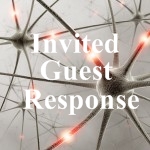 I am very pleased to provide the response of our first invited guest commentator, Mirjam Kouijzer, lead author of the research discussed in the recent BMED Report article, Neurofeedback For Autistic Spectrum Disorders: Promising Results In A Small Sample. The BMED Report extends a warm thanks to Mirjam Kouijzer and Hein van Schie for this response.
I am very pleased to provide the response of our first invited guest commentator, Mirjam Kouijzer, lead author of the research discussed in the recent BMED Report article, Neurofeedback For Autistic Spectrum Disorders: Promising Results In A Small Sample. The BMED Report extends a warm thanks to Mirjam Kouijzer and Hein van Schie for this response.
Mirjam Kouijzer’s Response:
Investigating effects of neurofeedback for autism spectrum disorders (ASD) is a relatively new field of research. Our first results were recently published in a paper that was reviewed by Christopher Fisher. Furthermore, a second paper investigating the long-term results of this treatment is now in press and expected soon. These positive results have given incentive for further studying the effects of neurofeedback in ASD. We are currently working on more extensive studies with larger samples to be able to draw more conclusions about the effects of neurofeedback for children with ASD and the working mechanisms that underlie these results. I am very happy to notice that neurofeedback is being discussed and of interest in a growing number of people. In order to be accepted as a full-fledged treatment next to behavioral therapy and medication, replications of the effects we found and additional studies with improved design to control for unspecific factors are needed.
In addition to the summary that was given here, I would like to point to the results we found in the session data. This data comprises brain wave activity at the location where the electrode was placed during treatment, i.e. C4. At this location, participants were instructed to inhibit slow wave (theta) activity while enhancing faster brain waves (low beta or SMR) for 40 sessions. 65% of the participants showed a significant decrease in theta power and a significant increase in low beta power over 40 sessions. These data indicate that children with ASD are indeed able to act upon their brain wave activity. Interestingly, other studies examining effects of neurofeedback in other populations also point to 60-70% success rates.
While reading Fisher’s comment I noticed some confusion about the protocol used in the study. As I mentioned before, treatment occurred at C4, that is, at the right hemisphere central location. The paper described electrode placement at C3 and C4, but feedback came only from C4. C3 was used only for monitoring brain wave activity over the left hemisphere. We found that neurofeedback training at C4 affects activation over both hemispheres. I hope this explanation clarifies the questions about the exact protocol that was used.
Mirjam Kouijzer, Radboud University Nijmegen, the Netherlands
Reference:
Kouijzer, M., de Moor, J., Gerrits, B., Congedo, M., van Schie, H. (2009). Neurofeedback improves executive functioning in children with autism spectrum disorders. Research in Autism Spectrum Disorders, 3, 145-162.
Comments are closed.